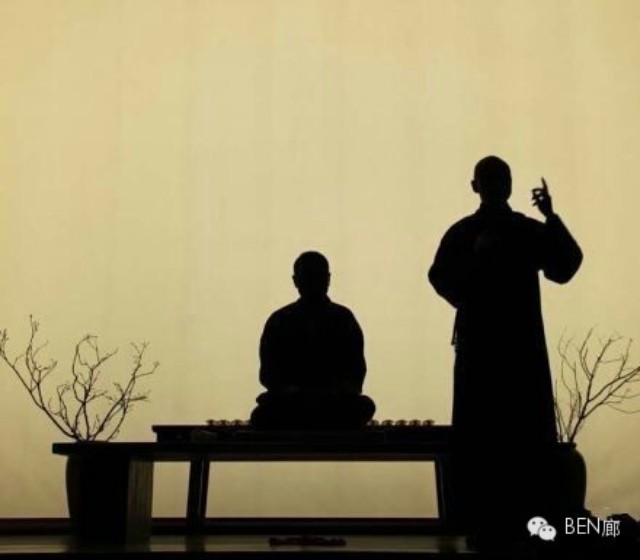The development of Buddhism in the Tang Dynasty had two important historical achievements: first, the study of the classics led the world; second, the study of the teachings became Chinese.
The first year of the Daitong era of the Liang dynasty in the Southern Dynasties (A.D.527In the year of 1948, the Indian monk Bodhidharma came to China by sea and disembarked in Guangzhou, and soon after he was invited to go north to Jinling to meet with Emperor Wu of Liang, and then due to a disagreement, Dharma went to Shaolin in Songshan to propagate the Dharma. Dharma is the "28th Ancestor of the Western Paradise" of Zen Buddhism in India, and after coming to China, he founded the Gateway, which is honored as the first ancestor of Zen Buddhism in the Middle Kingdom. The "lineage" of Zen Buddhism was passed on to the fifth ancestor, Hongneng, but the sect was still not revitalized, and its career was just mediocre. In the reign of Xianheng of the Tang Dynasty, Huineng was honored by Hongneng with the mantle of Dharma Successor and became the Sixth Patriarch, and at that time, Huineng had only been a member of the Sixth Patriarch.30Out of the head.16Years later, Hui Neng, who had returned to the south, began to propagate the Dharma.
Hui Neng was a religious reformer who dared to think, speak and act. It is said that he was not highly educated, but his "long-standing wisdom" was very deep and his ideas were very new. When Hongneng put down a large group of disciples who had followed him for more than ten years and passed on his ancestral clothes to a Lingnan woodcutter whom he had only known for eight months, it was precisely because of the amazing wisdom and boldness hidden in him that he expected this person would be able to revitalize the sect in the future. As his successor, Huineng really lived up to his teacher's expectations. He created the epiphany of "seeing the nature and becoming Buddha", and set up the religious rules of farming and Zen, which made Zen Buddhism a typical model for the Chineseization of Buddhism. In just a few decades, the momentum of Southern Zen swept the world, not only suppressing Northern Zen, but also showing a desire to make other sects give up their ground. Since then, "All the words of Zen in the world have their origin in Caoxi." Southern Chan achieved the position of the authentic Chinese Zen Dharma.
Zen is a very complex and profound historical and cultural phenomenon. Since the Tang Dynasty, it seems that the shadow of Zen can be found everywhere in traditional Chinese culture. It should be said that the concept of "Zen culture" has been potential in history for a long time.
Many modern scholars believe that Zen can have such a wide and far-reaching penetration mainly because it does not have so many theoretical proofs and practice levels as the Vaisnava Sect and Tiantai Sect. In Zen, complexity is simplified, and a single thought of enlightenment can transcend the sea of life and death and lead one straight to the land of the Buddha. This is the characteristic of the teachings and rituals of Zen Buddhism, and it is indeed an insightful view. The Eastern Jin Buddhist translator Hatomo Roshi, who had a deeper understanding of the Chinese character, also said: "The Qin people are still simple".
However, do we see the inner essence of Zen through its simple and clear "appearance"? This essence is the ideology of pursuing equality of personality and its unique artistic temperament.
In the Tanjing, which records Huineng's life-long teachings, there is a notable sense of equality of personalities: "The inferior has the wisdom of the superior". This is a direct challenge to the Confucian doctrine that "only the wise are superior and the foolish are inferior". Hui Neng's courage to break through the ideological cage of superior wisdom and inferior foolishness demonstrated an extraordinary and advanced humanistic philosophy, laying the foundation for the evolution of Zen doctrine.
Hui Neng's unique and innovative teachings attracted a large number of Zen masters who were interested in changing the fashion. It is reported that there were many people who got the law under his seat, and his disciples were spread all over the north and south of the Yangtze River, each spreading one side. By the time of the Middle Tang Dynasty, the new teachings of Zen had formed a mature system of thought, and the world's major jungles each had their own style, resulting in a great pattern of academic research.
The reform of Zen Buddhism initiated by Hui Neng was nothing less than a movement of intellectual liberation, which had a powerful and long-lasting resonance. Cao Xi Di6Yixuan, the founder of the Linji Sect, advocated being a "non-dependent Taoist", meaning that people should stand on their own feet and not be slaves to the sages. He dared to go in and out of the three realms "in an arc of bright light" and to "talk about Buddha, talk about ancestors, talk about Lohan, and talk about hungry ghosts. He traveled to all lands and taught all beings ......" (Linji Lu). He often bitterly advised learners, "Be confident and do not look for it." (Ibid.) He also told Dharma seekers, "There are ordinary scholars who seek Manjushri in Wutai Mountain, but they are wrong. There is no Manjushri in Wutai Mountain. Do you want to know Manjushri? Only your present use is always the same, no doubt everywhere, this is the living Manjushri." (Ibid.) Zen strongly advocates the concept of "self-confidence," which is the philosophical basis for the struggle for equality of personality.
Zen requires scholars to understand subtle philosophies with figurative thinking: "Green and verdant bamboos are always the Dharma body; lush yellow flowers are nothing but prajna." (The Discourses of Zen Master Dazhu). To penetrate the ineffable experience with wonderful enlightenment: "There is a way to the door of emptiness, but only those who have reached it know how long it tastes. When the mind is free of grass and trees, the body naturally radiates white light." (Ancient Zunshu Quotes - Fayan Monk's Quotes) Anyone who has read a Zen book such as "Lamp Records" and "Quotes" is touched and overwhelmed by the profound humanitarian thoughts and wonderful artistic language. This kind of book, which is written in the style of words, mainly contains the "French" words of the Zen masters, and there are a large number of poems and verses in it, because the Zen masters always like to use poems as their spokespersons.
In a sense, the history of Zen is a history of poetry. Many "poet-monks" in history have made great achievements in their creative work, which have attracted the world's attention. Zen also welcomed many literati to join in the creation of "Zen poetry" with its broad-mindedness. Famous poets and scholars, such as Wang Wei, were all active in the creation of Zen poetry. The influence of Zen poetry on Chinese poetry is obvious. In the Song Dynasty, Zen Buddhism was almost "poeticized", and it was during this period that the criticism of poetry reached a climax, and the "Poetry Discourses" were especially flourishing. The publication of Canglang Poetry Story marked the stage where the theoretical study of poetic creation stepped into a conscious stage. Yan Yu, the author of Canglang Poetry Talks, clearly put forward the idea of "discussing poetry as if it were Zen" in his "Poetry Debate" at the beginning of the book, and argued that "the way of Zen is only in the wonderful enlightenment, and the way of poetry is in the wonderful enlightenment as well." Yan Yu's point of view shows that traditional Chinese poetics has not only accepted, but also established some important concepts of Zen as the guiding theory of poetic creation. This is an important milestone in the history of Chinese poetry.
Zen has injected vitality into traditional Chinese culture and art. It has not only made remarkable achievements in the study and creation of poetry, radiating an irresistible charm. At the same time, it has also had a profound impact on calligraphy, painting, tea art and other fields, giving rise to the so-called "Zen books", "Zen paintings" and "Zen tea".
To deeply explore the philosophical consciousness of advocating equality of personality and the artistic temperament of promoting individuality of life latent in the culture of Zen should become the task of the times in our study of Zen culture. From a historical point of view, the reason why Zen has survived in Chinese culture is that it has made up for the lack of equality and individuality in Confucianism.
For Zen scholars, the essence of Zen is whether or not they can realize the realm of "no obstruction". Scholars, in the spirit of the consciousness of equality of personality (philosophical concept), enter and leave the realm of equality of human beings and all kinds of self-containedness through lively realization (artistic interest), which is the realm of Zen. Su Shi has a poem: "The sound of the stream is the wide and long tongue, and the color of the mountains is not the pure body. Night to 84,000 gatha, how to lift like a person." This is the poet's visit to Mount Lu and at the request of the Elder of the East Forest Temple stayed overnight after the creation. The poet gives the precious spirituality and deep Zen theory to the infinite freedom of the sound of the water and the color of the mountains. It can be seen that the poet is in a world full of vitality and tranquility. It is in such a wonderful space and time that the poet expresses that he has realized the infinite meaning of life in one night, but it is difficult to tell others about it. Interpreting this superb piece of writing by Su Shi, I believe it will deepen our understanding of the philosophical and artistic underpinnings of Zen culture.
stupid (Beijing dialect)OOMay 4, 2004
(The article was published in the second issue of the Journal Series of Sun Yat-sen University in 2005.)

